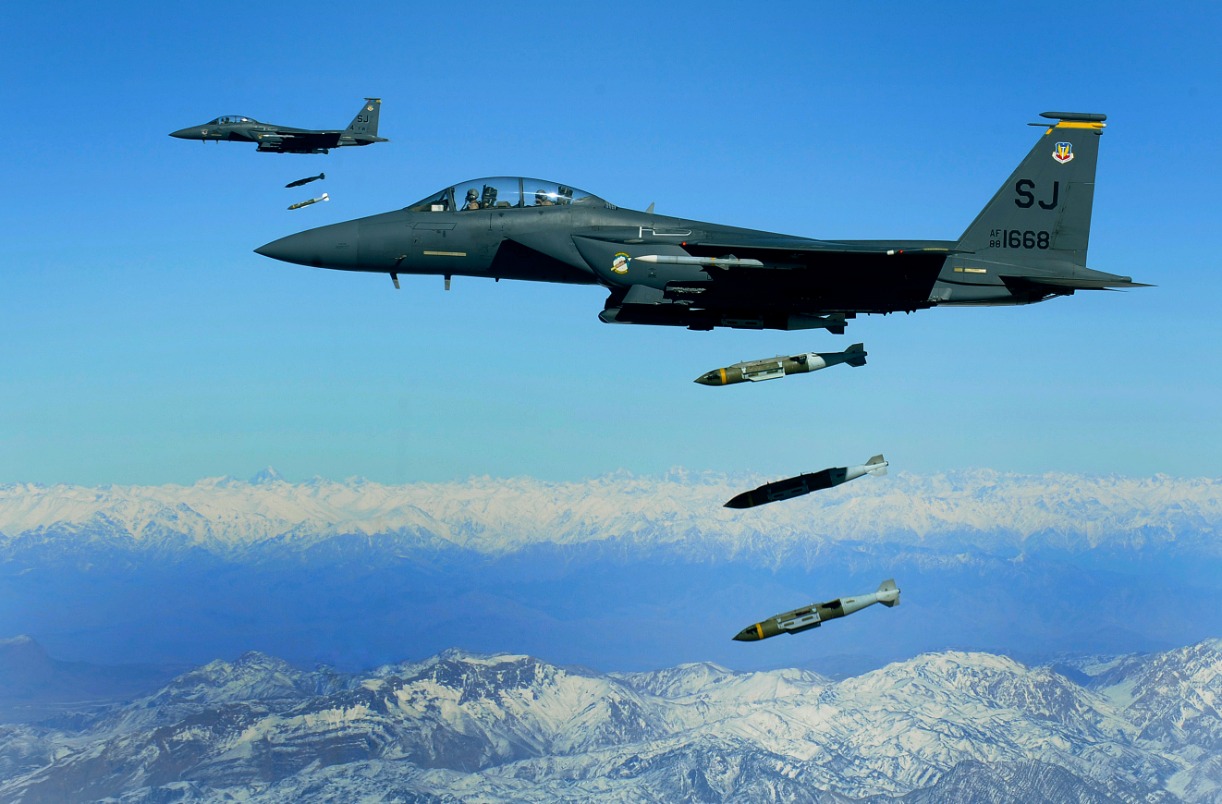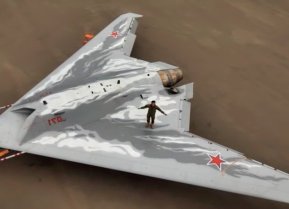F-15E: The U.S. Air Force's Fastest Plane Flying (And Oozing with Weapons)
The fastest jet remaining in the U.S. Air Force inventory today? The F-15E Strike Eagle has a top speed of Mach 2.5.
F-15E: The Air Force's Fastest Plane Flying Right Now - To the general public, speed may be a fighter jet’s most defining characteristic. Understandably. And the U.S., which possesses the most advanced and numerous fighter jet fleet in the world, has a bounty of fourth- and fifth-generation fighters noted for their speed.
The Americans were the first to break the sound barrier, of course, when Chuck Yeager rode Glorious Glennis past the mythical threshold of Mach 1. For the next two decades, the Americans kept punching out the envelope, flying faster and faster, past Mach 2, past Mach 3. The SR-71 Blackbird, one of aviation history’s most recognizable airframes, developed as a Cold War spy plane capable of outrunning enemy missiles, hit 2,200 miles per hour – more than three times the speed of sound. But that wasn’t the apex. The Americans pushed further and faster, setting an all-time speed record in 1967 with the X-15, a jet capable of flying to space itself. The X-15’s top speed: Mach 6.72, or 4,520 miles per hour.
Neither the X-15 nor the SR-71 is still in service – and the jets remaining in service are substantially slower – but America still possesses a cadre of jets capable of flying quite fast. The fastest jet remaining in the U.S. inventory? The F-15E Strike Eagle, with a top speed of Mach 2.5.
Not A Pound For Ground
Famously designed “without a pound for ground,” the original F-15 was a pure air superiority fighter, meaning the thing didn’t have the capability to perform air-to-ground missions. It was the Cold War and defense spending that was exorbitant – the idea that a multi-million dollar jet would be purchased, en mass, to perform one singular task was not offensive to taxpayers or to Congress. Accordingly, the F-15 was designed and purchased, singularly, to serve an air superiority role.
Similarly, the A-10 was designed singularly to provide close air support; the SR-71 was designed singularly to prove surveillance and reconnaissance. It was a different time with a different attitude towards military spending. Today, as the F-35’s “jack of all trades” design confirms, taxpayers and politicians are concerned with breadth – they want their money to go further, essentially – to provide a weapons system that can do more things. The wisdom of the modern approach has been criticized – an F-35 can do a little bit of everything, but can it do those things as well as the airframe designed to perform those things exclusively? The wisdom prevails. The F-15 was designed before modern wisdom had taken hold and was designed, unapologetically, to do one thing.
But the F-15 proved a venerable airframe, and as the threat environment changed, pressure increased to develop an F-15 variant that could do more – particularly provide air-to-ground. The result was the F-15 E-variant, known as the Strike Eagle.
F-15E: Distinct Differences
The F-15E, at quick glance, bears an obvious resemblance to its forebearer. But the F-15E does have some key differences. The most apparent differences are visually identifiable, including a darker grey camouflage, conformal fuel tanks, and a two-seat cockpit.
Yet, the most substantial differences relate to the F-15E’s function. Whereas the original F-15s are air superiority fighters, the F-15Es are multirole strike fighters designed to conduct deep penetration and ground attack and air superiority. Put simply, the F-15E is just a more well-rounded variant of the F-15.
While the F-15E was designed during the 1980s, while the U.S. was still in an arms race with the Soviet Union, the do-it-all functionality of the F-15E now seems prescient, given that post-Cold War designs have incorporated versatility at the cost of specialization, i.e. the F-35.
One of the F-15E’s primary differences is the use of a two-seat cockpit. The extra seat is for a CSO (pronounced “sizzo”). The CSO, basically the character Goose from Top Gun, oversees the F-15E’s air-to-ground avionics, including radar, thermographic cameras, and electronic warfare components. Generally speaking, the CSO is tasked with looking out for threats, picking targets, and navigating – which allows the pilot to simply pilot the jet. However – just in case – the F-15E’s backseat does have a stick-in rudder, allowing the CSO to fly the aircraft if ever needed.
The F-15E is outfitted with the tactical electronic warfare system (TEWS). The TEWS integrates a handful of different features: countermeasure technology; radar warning receivers; radar jammer; chaff/flare dispensers. The TEWS depends upon the ALQ-131, which is an externally mounted pod that can be carried on the F-15E’s centerline pylon.

Despite being designed during the Cold War, the F-15E is still relevant today, with over 200 in service with the US Air Force – and many more exported to allies abroad. And with an F-15E derivative, the F-15EX, currently in production, you can expect that some version of the F-15E will remain in service for a long time to come. But whether the F-15 remains the fastest jet in the U.S. inventory will depend upon the specs of the forthcoming (but still a ways off) Next Generation Air Dominance (NGAD) sixth-generation fighter.
About the Author
Harrison Kass is a defense writer and expert with over 1,000 op-eds and analysis pieces published. An attorney, pilot, guitarist, and minor pro hockey player, Harrison joined the US Air Force as a Pilot Trainee but was medically discharged. Harrison holds a BA from Lake Forest College, a JD from the University of Oregon, and an MA from New York University. Harrison listens to Dokken.
Image Credit: Creative Commons.


